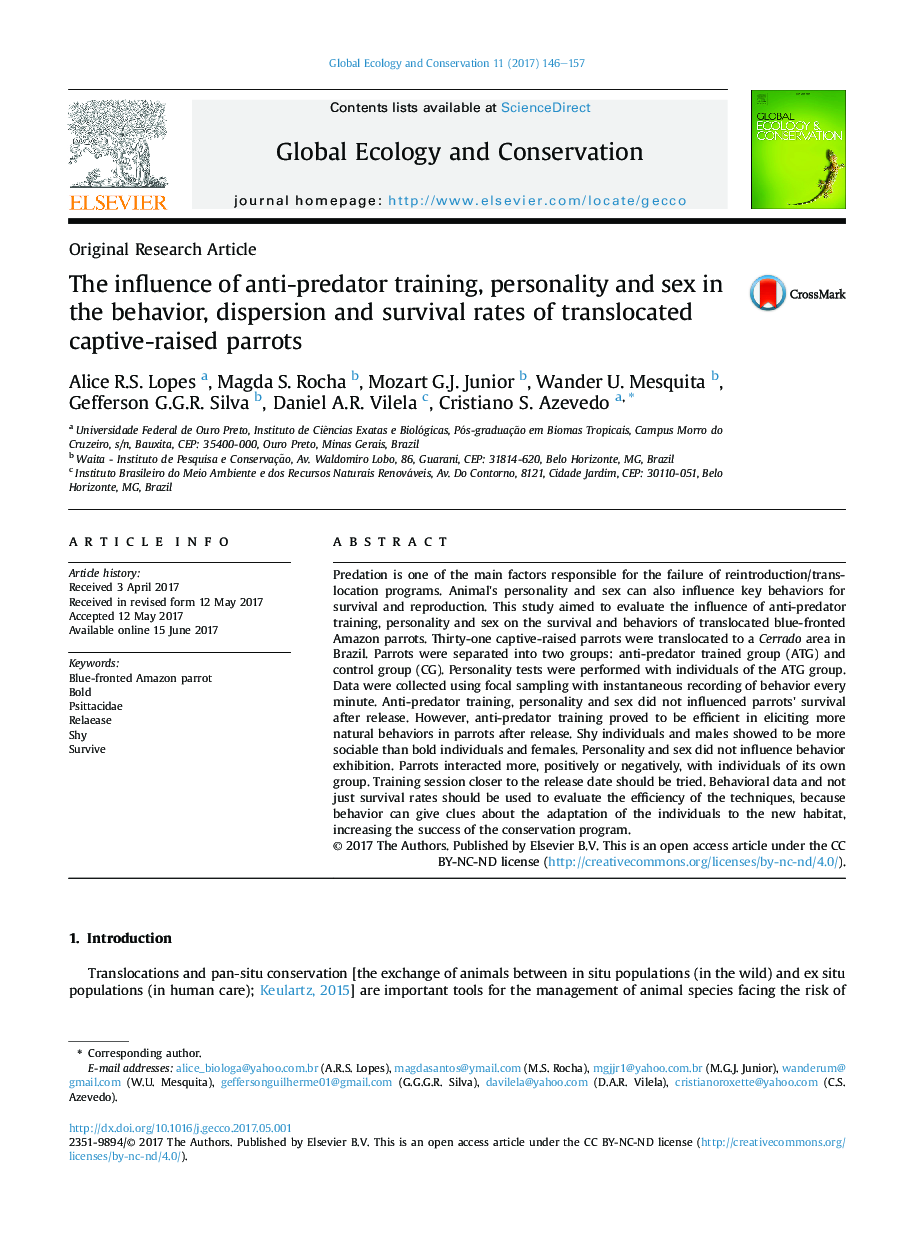| کد مقاله | کد نشریه | سال انتشار | مقاله انگلیسی | نسخه تمام متن |
|---|---|---|---|---|
| 5742407 | 1617656 | 2017 | 12 صفحه PDF | دانلود رایگان |
- Anti-predator training proved to be efficient in eliciting more natural behaviors in captive parrots.
- Shy animals should be released first since it has greater capacity to establish lasting social relationships.
- Parrots interacted more, positively or negatively, with individuals of its own group.
Predation is one of the main factors responsible for the failure of reintroduction/translocation programs. Animal's personality and sex can also influence key behaviors for survival and reproduction. This study aimed to evaluate the influence of anti-predator training, personality and sex on the survival and behaviors of translocated blue-fronted Amazon parrots. Thirty-one captive-raised parrots were translocated to a Cerrado area in Brazil. Parrots were separated into two groups: anti-predator trained group (ATG) and control group (CG). Personality tests were performed with individuals of the ATG group. Data were collected using focal sampling with instantaneous recording of behavior every minute. Anti-predator training, personality and sex did not influenced parrots' survival after release. However, anti-predator training proved to be efficient in eliciting more natural behaviors in parrots after release. Shy individuals and males showed to be more sociable than bold individuals and females. Personality and sex did not influence behavior exhibition. Parrots interacted more, positively or negatively, with individuals of its own group. Training session closer to the release date should be tried. Behavioral data and not just survival rates should be used to evaluate the efficiency of the techniques, because behavior can give clues about the adaptation of the individuals to the new habitat, increasing the success of the conservation program.
Journal: Global Ecology and Conservation - Volume 11, July 2017, Pages 146-157
